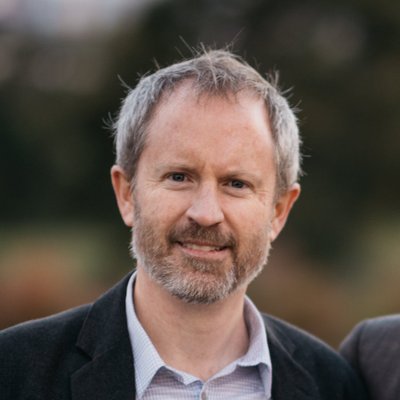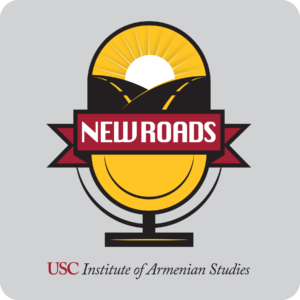
Emil Sanamyan (ES) sent questions to Ryan Griffiths (RG), associate professor of political science at the University of Syracuse, by e-mail and he kindly responded while traveling in Armenia.
ES: You have written about armed secession around the world, what would you say is the trend over the past decade: is the number of such movements growing? What does that mean for the world and the way it is organized?
RG: In my research I define a secessionist movement as a self-identified nation that actively seeks to separate from the country it is legally a part of and form its own recognized independent sovereign state. That’s a fairly broad understanding of the concept, one that does not require that a movement be violent or illegal. It would include Artsakh, Catalonia, Bougainville, and New Caledonia. As of 2017, there were 60 secessionist movements around the world. That number has not changed much over the last decade, though it is a bit higher than the post-WWII average of 52 movements per year. One implication of these figures is that secessionism is simply quite common in international life. That is the subject of my 2016 book, Age of Secession: The International and Domestic Determinants of State Birth (Cambridge University Press).
ES: If we take a longer view of human history, we could see periods of political consolidation into super-states / empires, followed by fragmentation. What are the major forces driving these processes?
RG: The clear trend since the early 20th century is toward political fragmentation. There were only 51 sovereign states in the international system in 1912, and now there are nearly 200. Most of this state birth happened after 1945. At the same that we’ve seen a proliferation of states, we’ve also seen a steady supply of new secessionist movements. So new movements are rising up to replace some of the successful movements that gain independence.
Interestingly, according to another project I work on called the International System(s) Dataset (ISD), with Charles Butcher, the year 1912 served as an inflection point in the overall trend. Prior to that year, the number of states had been declining through conquest and unification. Indeed, the number of 51 states in 1912 represents an historical low-point. We would have to go quite far back into human history to find a similarly small number, so far back that it would be difficult to identify and compare political units.
There are various factors driving these trends. At the level of the international system, identifiable factors include a prohibition on conquest after 1945 (what scholars call the territorial integrity norm), the rise of the norm of self-determination, and the globalization of the world economy. The combined effect of these factors is a world in which smaller states can thrive, and where national secessionist movements can blossom.
ES: How would you characterize Artsakh’s situation: is it strictly a secession, a secession within post-Soviet secessions or something else?
RG: By my terms, Atsarkh is a secessionist movement. I would place it in a subset of movements that are referred to as de facto states. These are secessionist movements that are geographically sundered from the larger state, usually by a militarized line and/or UN-monitored zone. Other examples include Abkhazia, Northern Cyprus, and Somaliland. These movements function as states. They are de facto independent, and yet unrecognized by the international community. As the people and government of Artsakh know, that lack of recognition creates challenges in terms of connectivity with the rest of the world. Many, but not all, of these movements were born from the collapse of the Soviet Union.
ES: What do you expect it would take for the conflict around Artsakh to stabilize and in what time frame?
RG: Like other de facto states, Artsakh is stuck in a middle position between full statehood and reintegration with the home state. In the short run, Artsakh is likely to continue in this way. It won’t be fully stabilized and tension with Azerbaijan may endure. Reintegration would probably require that the region is reconquered by Azerbaijan, in the same way that Sri Lanka defeated Tamil Eelam a decade ago. This seems unlikely given the military capabilities of Artsakh and its patron state, Armenia. However, full sovereign independence also appears out of reach, at least for now, because Azerbaijan is bent on preventing other states from recognizing Artsakh. It is possible that the international community could go around Azerbaijan and recognize Artsakh anyway, as many states did with Kosovo, but lead states and key players are not keen to do so. At the moment, Artsakh is not recognized by any other sovereign state.
I am just now completing a book on the strategy and tactics of secessionist movements, and one of my findings is that de facto statehood has a downside. Although it is true that the people of Artsakh are free to govern themselves – no small matter given the conflict of the early 1990s – their disconnection from the larger state removes their levers of compellence. Unlike the Catalans, they cannot apply pressure on the state through democratic institutional channels. Unlike Bougainville which fought a violent guerilla war against Papua New Guinea twenty years ago, secessionists in de facto states cannot resort to insurgency tactics, or even methods of nonviolent civil resistance, because the two populations are completely separated by a frontline. Winning independence requires that a change be made, but de facto statehood removes the ability to compel the home state to negotiate. That’s why these are referred to as frozen conflicts.
ES: What is CONIFA? Is it primarily political or is it mostly about football? What does it represent for you as a social scientist?
RG: CONIFA is the Confederation of Independent Football Associations. Like FIFA, its much wealthier and better-known sibling, CONIFA provides a forum in which national teams can compete. The difference is that it accepts the teams that are excluded from FIFA. According to the 2019 European Cup program, CONIFA “support athletes and teams of nations, de facto independent states, regions, ethnic minorities and isolated territories who are deprived of the opportunity to play in big football competitions.” The organization currently includes 54 nations from around the world.
According to Per-Anders Blind, the CONIFA President, CONIFA strives to create an opportunity for players from abused and/or unrecognized nations to play as equals, and to develop pride and respect in their community. The CONIFA leadership is well aware that politics plays a role in their activities, but their main goal is to give nations the freedom to play. Although teams can sing national anthems and wave flags, they are discouraged from other forms of political expression.
As a scholar of self-determination and secession, I find CONIFA to be fascinating. The fact that you get to watch football at their events is just a nice bonus!
ES: Is there any sense that CONIFA is just another vehicle for Western Europeans exploitation of the East, in this case the breakaway states looking for international validation, and not too dissimilar from FIFA’s / UEFA’s exploitation of “Eastern” money to bankroll Western football?
RG: I think CONIFA’s intentions are rather straightforward. The leaders of the organization are mad about football, and they are keen to give under-represented nations the chance to play. CONIFA is full of amazing human interest stories, some of which are chronicled in Chris Deeley’s new book, Forgotten Nations. One of my favorites is the story of how the Darfuri team was started in the refugee camps of eastern Chad by a pair of aid workers.
The organization has received criticism from some parent states. The Ukrainian Government complained about the participation of Karpatalya, a Hungarian minority region in western Ukraine, at the 2018 World Cup. Likewise, Azerbaijan apparently applied a fair but of pressure on CONIFA and participating nations in advance of the current tournament. I think this form of criticism is inevitable given what CONIFA is trying to do.
I don’t see an east-west issue here. Some of the football clubs are wealthier than others, but that doesn’t correspond with east and west. Indeed, one of the reasons CONIFA likes to hold tournaments in de facto states like Artsakh and Abkhazia is because these nations are backed by a state that can serve as host. It is important to remember that CONIFA is an all-volunteer organization. It does not have the funds that FIFA does.
ES: Are you in Artsakh for CONIFA, and if so what are your impressions of the tournament and the places?
RG: I was in Artsakh for the first half of the tournament. I thought Artsakh was beautiful and that the people were terrific. There is a substantial amount of local excitement about the tournament, and it appears that the entire society is celebrating. It’s great to see an event like this.









